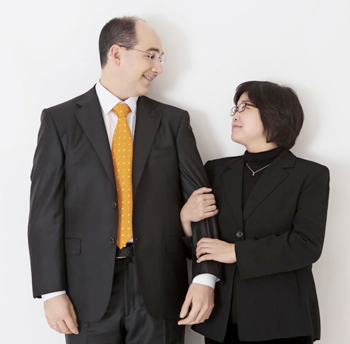by Robert Rollin

Cellist Mark Kosower and pianist Jee-Won Oh presented a varied program ranging from the Classical to the Modern era. Principal cello of The Cleveland Orchestra, Kosower particularly demonstrated his remarkable technical command of his instrument and his distinguished interpretive skills in the afternoon’s two Romantic-era works.
His performance of Brahms’s Sonata No.1 in e was a delight. His tempo in the Allegro non troppo allowed for great expressive sensitivity in the low, opening statement, as well as a ray of sunshine in the gorgeous second theme.
Brahms was not yet 30 when he wrote this magnificent piece, full of wonderful melodic lines and beautiful harmony. Jee-Won Oh collaborated with perfect balance and the tenderness needed for one of the greatest works in the literature.
The Allegretto quasi menuetto sparkled with amiable grace. In contrast, the final Allegro generated an amazing, riveting energy supported by the racing tempo, a galloping triple meter, syncopations, and accents.
The two movements of Schumann’s Adagio and Allegro in A-flat created fine contrast to the Brahms. The intimate Adagio, marked “Slow, with fervent expression,” was touching. The Allegro, marked “Fast and fiery,” which followed without pause, raced to a bravura ending.
Beethoven’s Sonata No. 4 in C consists of four movements paired as slow-fast, slow-fast, the fast movements following without pause. Especially interesting was the second pair, where the cello sustains long notes or open fifths against lively accompaniments.
Of the three 20th-century works, Alberto Ginastera’s Pampeana No. 2 — Rhapsody for Cello and Piano was the most intriguing, following up on the Duo’s September centenary tribute to the composer at CIM. Ginastera took his inspiration from the Pampas, the low-lying, fertile plains in Argentina where the gauchos worked. He wrote the piece for his second wife, Aurora, a talented cellist.
In his lively performance, Kosower tossed off the multiple stops in the long and challenging cadenza with poise and agility. Two sets of ostinatos, the second even more intense than the first, enlivened Oh’s piano part, as Kosower continued his more lyrical lines. The ensemble was flawless through to the brilliant closing.
Originally a seven-movement piano piece, Ernö Dohnányi’s Ruralia Hungarica was transcribed into an orchestral work and subsequently arranged for violin and piano, serving as a virtuoso tidbit for Jascha Heifetz and Fritz Kreisler. Dohnányi later arranged that version for cello and piano. Kosower and Oh tore through the piece. The rhapsodic middle section features fast piano arpeggios supporting lyrical cello melodies. In a sostenuto ending, the cello line climbs to the stratosphere.
Kosower and Oh closed the concert with Mstislav Rostropovich’s Humoresque, a perpetual motion piece that the Duo ripped off at lightning speed, bringing the cheering audience to its feet. As an encore, the husband-and-wife team played a slow and lyrical Nocturne by Tchaikovsky. This final emotional turn left the audience happily drained.
Published on ClevelandClassical.com October 10, 2016.
Click here for a printable copy of this article



